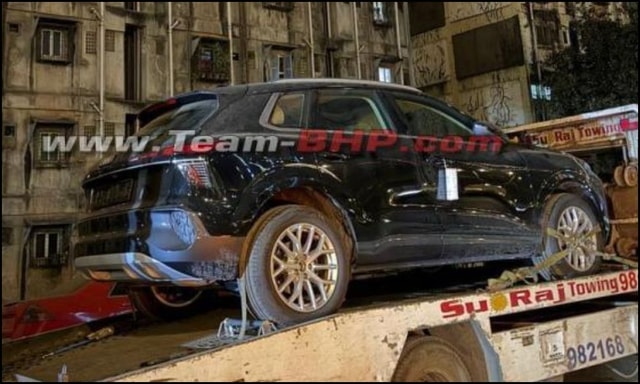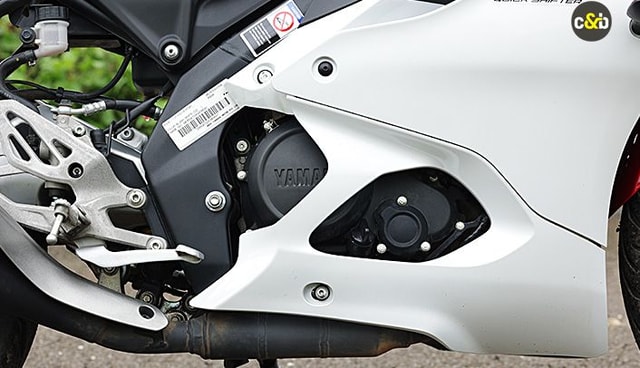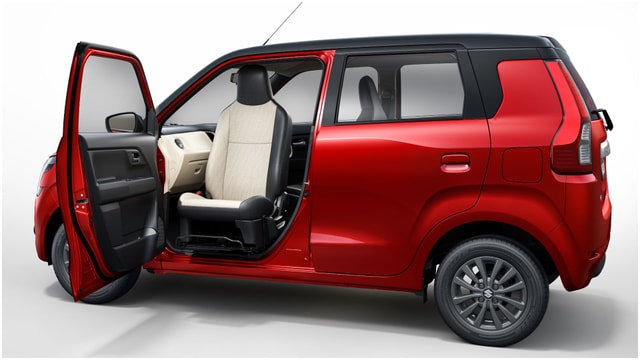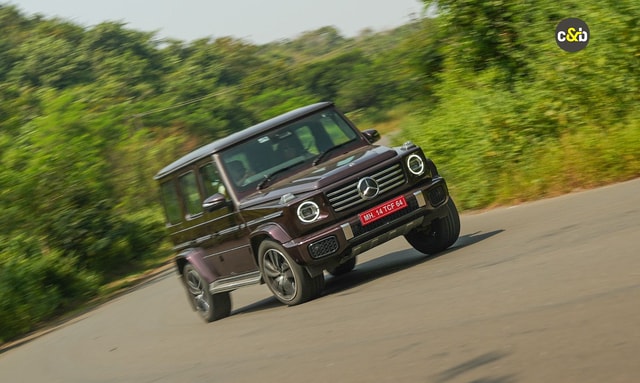What are BS-I, BS-II, BS-III, BS-IV, and BS-VI Emission Norms?

- The Bharat Stage emission regulations are based on European norms
- Emission norms in India for automobiles first came into effect in 1989
- India announced the latest BS-VI in April 2020, with the regulations
There is no denying that cars do radiate considerable levels of noxious gases. To curb car emissions, the Indian government announced its first Bharat Stage regulation in 1989. With the number of cars plying on the road increasing annually, BS-I wasn´t enough to keep pollution levels down. So the government began to upgrade accordingly. After BS-I regulation, the government rolled out BS-II, BS-III, BS-IV, with BS-VI, being the latest.
This article will walk you through all the different Bharat Stage regulations implemented over the years. Let's get started!
What is BS I?
The BS-I regulation in India only allowed a maximum carbon emission of 2.72 g/km and a respirable suspended particulate matter discharge of 0.14. Additionally, a cap of 0.97 g/km on Nitrogen Oxides+ Hydro Carbons release.
Under BSI, carmakers had to re-tune secondary air intake systems, exhaust gas recirculation systems, carburettors and add a tri-metal layer to the system.

Photo Credit: unsplash.com
What is BS II?
Under the Bharat Stage-II, the maximum permissible sulphur content in fuels was restricted to 500 PPM. In terms of emissions, acceptable Carbon Monoxide emissions were 2.2 g/km, respirable suspended particulate matter discharge was 0.08, and 0.05 g/km was the maximum discharge limit for Nitrogen Oxides and Hydro Carbons.
Instead of the carburettor, car makers had to equip the automobiles with a Multi-point Fuel injection system.
What is BS III?
In 2010, the government declared BS-III norms to be mandatory. As per BSIII, permissible levels of Respirable suspended particulate matter discharge is 0.05, Hydro Carbons+Nitrogen Oxide discharge is 0.35 g/km, and 2.3 g/km is the cap for Carbon Monoxide emission.
This new norm also restricted the sulphur content in fuels to 100 PPM. Also, installing a catalytic converter was a part of BSIII to handle Hydro Carbons and Carbon Monoxide.

Photo Credit: unsplash.com
What is BS IV?
Sulphur content dropped by a whopping 50PPM in BS-IV norms. To ensure compliance with BS-IV, manufacturers equipped cars with bigger-sized catalytic converters. To ensure efficient combustion, they also tweaked the ECU. The new regulations also called for modifications in the exhaust and air intake systems.
The maximum Respirable suspended particulate matter discharge allowed was 0.025 and 0.18 g/km for Hydro Carbons+Nitrogen Oxide discharge.
What is BS-VI?
BS-VI is the latest emission norm in India. AS per BS-VI, the sulphur content in fuel has been slashed down by a whopping five times to 10 PPM. It also restricts tailpipe discharge from cars running on petrol.
For diesel models, the peak level of carbon monoxide should not exceed 0.50 g/kg. It also limits the Hydro Carbons+Nitrogen Oxide discharge to 0.15 g/km. As for petrol cars, the Respirable suspended particulate matter maximum discharge level is 0.05.
How Has The Rollout of BS-VI Affected BS-IV Cars?
With the announcement of BS-VI norms in India, the car models running on BS-IV or older fuels had to switch to cleaner fuels. You might already know that the BS-VI fuel's sulphur content is much lower than its predecessors. As a result, implementing BS-VI fuel has curbed harmful emissions from automobiles.
Coming to the effect of BS-VI on BS-IV cars, some did some minor tweaks eventually. Since sulphur acts as a lubricant for diesel engines, your vehicle might require routine maintenance to prevent wear and tear.

Photo Credit: unsplash.com
Car owners must learn about the Bharat Stage emission standards. Hopefully, the updated emission regulations will give Indian automakers an environment-friendly approach.
Trending News
 1 min readYamaha YZF-R2 Name Trademarked In India
1 min readYamaha YZF-R2 Name Trademarked In India 1 min readTriumph Tracker 400: In Pictures
1 min readTriumph Tracker 400: In Pictures
Latest News
 car&bike Team | Dec 19, 2025Next-gen Audi Q3 Spied In India Ahead Of Launch In 2026Third-gen Q3 made its global debut in mid-2025, getting notable tech upgrades and electrified powertrain options.2 mins read
car&bike Team | Dec 19, 2025Next-gen Audi Q3 Spied In India Ahead Of Launch In 2026Third-gen Q3 made its global debut in mid-2025, getting notable tech upgrades and electrified powertrain options.2 mins read car&bike Team | Dec 19, 2025Yamaha YZF-R2 Name Trademarked In IndiaThe Yamaha R15, one of Yamaha India’s most popular motorcycle models, is likely to continue, even when the R2 finally makes it debut.1 min read
car&bike Team | Dec 19, 2025Yamaha YZF-R2 Name Trademarked In IndiaThe Yamaha R15, one of Yamaha India’s most popular motorcycle models, is likely to continue, even when the R2 finally makes it debut.1 min read car&bike Team | Dec 18, 2025KTM 160 Duke With TFT Dash launched At Rs 1.79 LakhThe 5-inch colour TFT dash is borrowed from the 390 Duke and is shared across the brand’s sub-400cc lineup.2 mins read
car&bike Team | Dec 18, 2025KTM 160 Duke With TFT Dash launched At Rs 1.79 LakhThe 5-inch colour TFT dash is borrowed from the 390 Duke and is shared across the brand’s sub-400cc lineup.2 mins read car&bike Team | Dec 18, 2025Lamborghini Urus Seized By Cops Following Viral Clip Of Speeding On Bandra-Worli Sea LinkThe car was seized after a video of it allegedly overspeeding on the Bandra–Worli Sea Link, where the speed limit is capped at 80 kmph, went viral.2 mins read
car&bike Team | Dec 18, 2025Lamborghini Urus Seized By Cops Following Viral Clip Of Speeding On Bandra-Worli Sea LinkThe car was seized after a video of it allegedly overspeeding on the Bandra–Worli Sea Link, where the speed limit is capped at 80 kmph, went viral.2 mins read car&bike Team | Dec 18, 20252025 Ducati XDiavel V4 India Launch Details RevealedThe new Ducati XDiavel V4 will be launched towards the end of December 2025 and will sit alongside the standard Ducati Diavel V4.3 mins read
car&bike Team | Dec 18, 20252025 Ducati XDiavel V4 India Launch Details RevealedThe new Ducati XDiavel V4 will be launched towards the end of December 2025 and will sit alongside the standard Ducati Diavel V4.3 mins read Amaan Ahmed | Dec 18, 2025Maruti WagonR Swivel Front Seat Kit Launched: Check Price, AvailabilityBangalore-based startup TrueAssist Technology Private Limited has developed a mechanism that allows the front passenger seat to swivel outwards, in a bid to improve accessibility for the aged and persons with disabilities.2 mins read
Amaan Ahmed | Dec 18, 2025Maruti WagonR Swivel Front Seat Kit Launched: Check Price, AvailabilityBangalore-based startup TrueAssist Technology Private Limited has developed a mechanism that allows the front passenger seat to swivel outwards, in a bid to improve accessibility for the aged and persons with disabilities.2 mins read
 Bilal Firfiray | Dec 19, 2025Maruti Suzuki e-Vitara Review: Worth The Wait?After a long wait, the first-ever electric Maruti Suzuki is here. It’s the e-Vitara, and it comes with a few promises. But arriving this late, is it worth the wait? Or is it a case of too little, too late?9 mins read
Bilal Firfiray | Dec 19, 2025Maruti Suzuki e-Vitara Review: Worth The Wait?After a long wait, the first-ever electric Maruti Suzuki is here. It’s the e-Vitara, and it comes with a few promises. But arriving this late, is it worth the wait? Or is it a case of too little, too late?9 mins read Bilal Firfiray | Dec 18, 2025Mercedes-Benz G450d: The Subtle Power of EvolutionThe Mercedes-Benz G 450d evolves subtly with more power, improved efficiency, and modern tech, while staying true to the timeless G-Class design. And character.4 mins read
Bilal Firfiray | Dec 18, 2025Mercedes-Benz G450d: The Subtle Power of EvolutionThe Mercedes-Benz G 450d evolves subtly with more power, improved efficiency, and modern tech, while staying true to the timeless G-Class design. And character.4 mins read Janak Sorap | Dec 11, 2025Harley-Davidson X440 T First Ride Review: Smarter and SharperHarley-Davidson has taken the X440 and given it a more focused and engaging twist. The result is the X440 T—essentially the same platform but updated in areas that give the motorcycle more appeal and riders more thrill.5 mins read
Janak Sorap | Dec 11, 2025Harley-Davidson X440 T First Ride Review: Smarter and SharperHarley-Davidson has taken the X440 and given it a more focused and engaging twist. The result is the X440 T—essentially the same platform but updated in areas that give the motorcycle more appeal and riders more thrill.5 mins read Shams Raza Naqvi | Dec 10, 20252025 Mini Cooper Convertible Review: More Colour On Indian RoadsThe updated Mini Cooper Convertible is set to be launched in the Indian market in the next few days. We drive it around Jaisalmer for a quick review.5 mins read
Shams Raza Naqvi | Dec 10, 20252025 Mini Cooper Convertible Review: More Colour On Indian RoadsThe updated Mini Cooper Convertible is set to be launched in the Indian market in the next few days. We drive it around Jaisalmer for a quick review.5 mins read Bilal Firfiray | Dec 8, 2025Tata Sierra Review: India’s New Favourite?Marking its return after a few decades, the reborn Sierra has made everyone sit up and take notice. But is it worth the hype?10 mins read
Bilal Firfiray | Dec 8, 2025Tata Sierra Review: India’s New Favourite?Marking its return after a few decades, the reborn Sierra has made everyone sit up and take notice. But is it worth the hype?10 mins read






























































































































